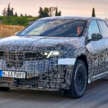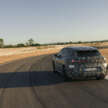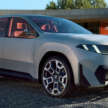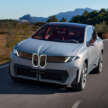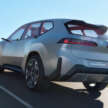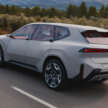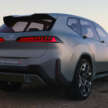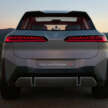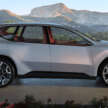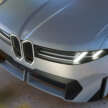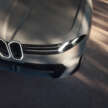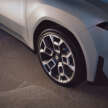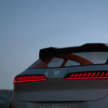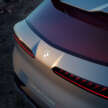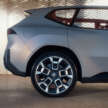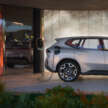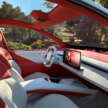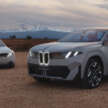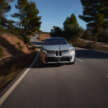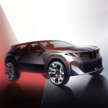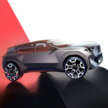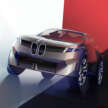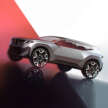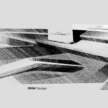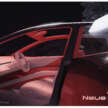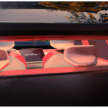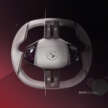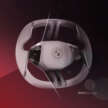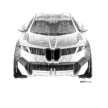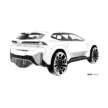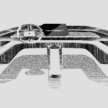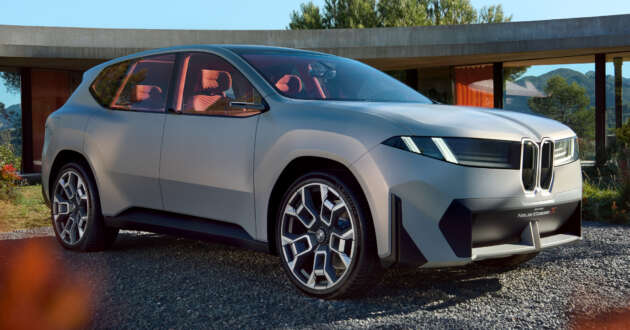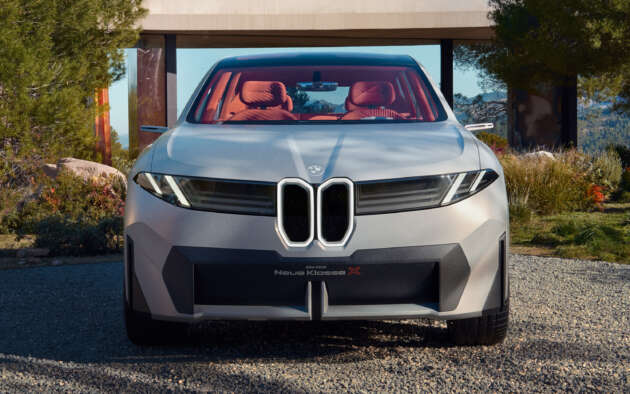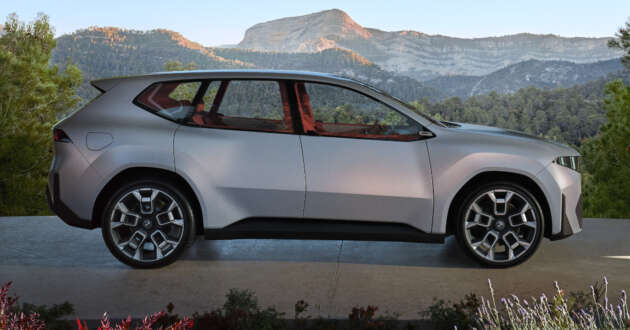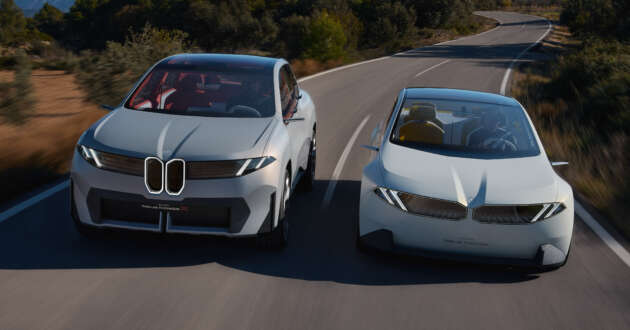This is it, folks, you’re looking at the all-new 2026 BMW iX3, codenamed NA5. That’s right, what you see here is not yet another concept car, but a full production model that will actually go on sale very soon. Let that sink in for a moment.
This didn’t come without warning, of course. When the BMW Vision Neue Klasse X was unveiled in March last year, the then-head of BMW i Design, Kai Langer – who has recently left the position to join Xiaomi, incidentally – told me personally that the production version would look nearly identical to the concept. We’ve all heard this before, so I told him I’d believe it when I see it. I shouldn’t have doubted him – sorry, Kai!
This also begs the question: now that the iX3 actually looks like the concept car that preceded it, will the next-generation 3 Series (codenamed NA0 for the all-electric i3) look exactly like the original Vision Neue Klasse sedan from 2023?
But before we jump the gun, let’s focus on what’s in front of us in the here and now. Yes, the iX3 looks nearly identical to the concept, save for a few details that have been watered down. The engraved BMW emblems have been swapped out for regular badges as expected, while the digital camera side mirrors and wingtip-door releases are now more conventional items. The door handles how have a flush, self-presenting design, a first for BMW.
It’s the bits they didn’t change that are more surprising. The tall and narrow kidney grille (fully illuminated as “light replaces chrome”), the wide enclosed headlights, rounded and more organic shape, right down to the rather nondescript taillights (split by the logo “valley” that’s replicated from the front end), the lack of rubber strips on the window/belt line, it has all survived the jump from concept to production. Just look at the side-by-side images above. Take notes, Subaru.
Size wise, the NA5 iX3 is very close to the latest G45 X3, though they are completely unrelated both visually and technically. The mid-sized SUV (or SAV, if you insist on BMW parlance) measures 4,782 mm long, 1,895 mm wide and 1,635 mm tall, making it marginally longer than the X3, but narrower and vertically shorter. Its wheelbase is also slightly longer at 2,987 mm, while weighing 2,285 kg in the launch iX3 50 xDrive guise. The latter makes it around 350 kg heavier than the X3 20 xDrive.
The shock continues inside too. If you had shown me this interior yesterday and said it’s of a real production BMW, I wouldn’t have believed you – just as I told Kai last year. But no, the alien-looking steering wheel with 12- and 6-o’clock spokes, the parallelogram (not rhombus – yes, I aced maths in school) centre screen and full-width instrument cluster at the base of the windscreen are all still here. The wraparound layout is intact too, though understandably the pumpkin colour way has been sobered up (it’s still an option, called Castanea, but it’s far less vibrant).
The 17.9-inch centre screen now runs the latest Panoramic iDrive – though the signature rotary dial itself is gone – featuring BMW Operating System X (I don’t think the Munich brand can shorten it to OS X this time around without risking a lawsuit from Cupertino). BMW says it’s more user friendly (though the on-screen AC vent adjustment says otherwise) and customisable than ever, with access to music/video streaming apps, games (it’s still trying to make AirConsole happen) and productivity functions.
A first for BMW, the typical meter cluster behind the steering wheel is no more. This has been substituted with the Panoramic Vision display that stretches from pillar to pillar on the base of the windscreen, 1.1 metre-wide. Like on the concept, this too is fully customisable, allowing the driver to pick from a variety of widgets and choose where to display them. There’s also the new Intelligent Personal Assistant avatar in the centre, perhaps “inspired” by the Nomi interaction AI in Nio vehicles. This projection is still visible under direct sunlight and through polarised sunglasses.
The higher placement of the reimagined instrument display is what has allowed BMW designers to adopt the radical steering wheel with vertical spokes. Look closely and you’ll see that the horizontal prongs aren’t actually connected to the rim, and you instead have little tabs/cutouts to wrap your thumbs around, à la the OG Proton Saga. The buttons operate via touch, but with haptic feedback. There is also a more conventional M Sport wheel without vertical spokes for the less adventurous.
Even with the full-width Panoramic Vision as standard, the BMW iX3 is still available with a 3D Head-Up Display projected on the windscreen. Also on are customisable cabin ambient lighting (peeking through the fabric layers), a surprisingly modest 13-speaker Harman Kardon audio setup (supports BMW HypersonX soundscape for virtual sounds) and a fixed panoramic sunroof. The glass ceiling doesn’t have a cover, but BMW claims it has unique solar energy filtering and 100% UV protection.
Beyond that, passenger room both front and rear is said to be substantially increased over the previous-generation model, with the rear bench now adopting the latest sofa-like shape and feel we’ve seen on the 7 Series and XM models. The boot swallows 520 litres, with an added bonus of a 58 litre frunk under the bonnet.
But enough with the boring static stuff already, let’s talk tech. The NA5 BMW iX3 is built on a brand new architecture, being the first of an entire family of future Neue Klasse models to come. Neue Klasse is literally German for New Class, and it’s a term that BMW has used once before. Back then, it described a pioneering series of models in the 1960s that effectively saved the BMW company from its post-war financial struggles.
For the modern age, BMW once again claims to have taken a significant step forward with this range or Neue Klasse vehicles, starting with what we see here. The numbers speak for themselves: 800V architecture (a BMW first), 108.7 kWh usable NMC battery (116 kWh gross), up to 805 km WLTP range, 400 kW max DC charging, and the ability to gain 372 km of range in just 10 minutes.
For a quick comparison, the outgoing iX3 – itself only introduced in 2021 – had a 73.8 kWh usable battery capacity, giving a 460 km WLTP range. So that’s 75% more range with a 47% bump in battery size. That’s progress right there, and perhaps a timely reminder that EV technology is still on a steep trajectory.
The big jump is achieved via a multitude of advancements. The latest sixth-generation BMW eDrive tech (Gen6) developed for the Neue Klasse family uses electric motors with 40% less energy loss, while being 10% lighter and 20% cheaper to produce. Then there’s the new cylindrical cell design with 20% higher energy density and 30% increase in charging speed. Icing on the cake is the more aerodynamic body, now down to a drag coefficient of 0.24 Cd – the best in its class. And while technically not a reduction, the NA5 iX30 weighs just 30 kg more than its G08 predecessor, despite the massively larger battery.
In iX3 50 xDrive form – notice the new naming convention, 50 xDrive instead of xDrive50 making for clearer physical badging – the electric SUV gets two motors: a new asynchronous motor (ASM) at the front making 167 PS and 255 Nm, plus an electrically excited synchronous motor (EESM) motor driving the rear axle with 326 PS and 435 Nm. Together, the total system output is 469 PS and 645 Nm, with a 0-100 km/h time of 4.9 seconds and a 210 km/h top speed.
The new 800V electrical architecture also allows for much quicker DC charging, up to 400 kW. BMW claims the car can maintain the peak charging rate for as long as five minutes and in ideal conditions, yield a 10%-80% top up in as short as 21 minutes – that’s staggering for a battery this large. Crucially, unlike the new electric Mercedes-Benz CLA, the iX3 supports older 400V chargers too via a switching matrix. For AC, it has an 11 kW OBC as standard, plus an optional 22 kW upgrade. The charging flap is also powered, and it uses AI to automatically open and close at charging stations.
Other advancements include the switch from a IGBT to an SiC inverter for better efficiency and reliability, while a so-called Energy Master now sits above the HV battery pack to control the power flow better (this is also said to enhance repairability as it’s easily accessible under the rear seats) Beyond motoring, the car also supports Vehicle-to-Load (V2L), Vehicle-to-Home (V2H) and Vehicle-to-Grid (V2G) functions. V2H practically converts the vehicle into a temporary storage device for solar energy generated at home, while V2G allows customers to integrate their car into the power grid.
Both V2H and V2G require the use of a new BMW Wallbox Professional (DC). Unlike what the name suggests however, it’s not a compact DC fast charger for your home. Instead, it’s technically an AC wallbox (up to 22 kW, though it uses a CCS2 cable) that supports bidirectional charging, allowing the iX3 to discharge up to 11 kW back into the housing power network. Whether this will be available or even work in Malaysia remains to be seen, of course.
And then we get to the driving dynamics part of it all. “Practically everything about it is new, yet it is also more BMW than ever,” said Oliver Zipse, chairman of the Board of Management of BMW AG. Core to the brand to the point of being synonymous with it is “Sheer Driving Pleasure,” coincidentally a tagline coined for the original Neue Klasse back in 1962. The new Neue Klasse is said to uphold that claim more than ever, despite it being fully electric.
It uses something hilariously named the Heart of Joy, a driving dynamics management “superbrain” responsible for the drivetrain, brakes, energy recuperation and steering sub-functions, processing information up to ten times faster than conventional control units. Even with standard passive spring and damper setup, the new iX3 drives and steers uniquely like a proper BMW – well, according to BMW at least – with a near-perfect 49:51 weight distribution and a low centre of gravity.
It stops even better than a typical BMW, apparently, with something called Soft Stop enabling the “smoothest stopping process ever achieved by a BMW.” Interesting fact, the company says the iX3 will use its brake energy regeneration system up to 98% of all braking in everyday driving, instead of using its physical brakes.
On the autonomous driving front, the new model supports a higher level of hands-free driving via its Motorway Assistant feature. With it activated, drivers can take their hands off the steering wheel for long periods on open highways, without being nagged on to hold the steering every few minutes.
Even if you do give some steering inputs or lightly tap on the brakes with the ACC on, the system will work with the driver and continue operating within its window, instead of either fighting off the inputs (like in most more heavy-handed semi-autonomous systems) of turning off completely, requiring you to switch it back on. BMW calls this Symbiotic Drive or cooperative steering and braking, introducing a whole new form of “Sheer Driving Pleasure.”
City Assistant is also new, helping the car recognise and stop at traffic lights when needed, and driving off again on green. This is all thanks to the Neue Klasse’s “Superbrain of automated driving,” said to have 20 times greater processing power than conventional control units.
So there you go, a concise summary (trust me, this is as short as I can make it – the press release is 58 pages long!) of the all-new 2026 BMW iX3 NA5. What to do you think of its looks and tech, do comment below!
GALLERY: 2026 BMW iX3 50 xDrive M Sport





























































































































































